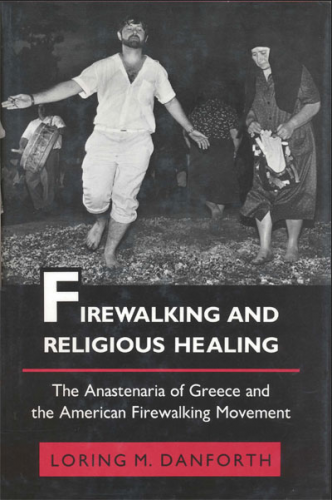
Slate turns to anthropologist Danforth for firewalking explanation

Firewalking and Religious Healing (Princeton University Press, 1989) by Dana Professor of Anthropology Loring "Danny" Danforth.
After 21 people in San Jose, Calif., burned themselves walking on hot coals during an event hosted by motivational speaker Tony Robbins on July 19, Slate asked Dana Professor of Anthropology Loring Danforth why.
Not why the 21 were burned, but why most of the 6,000 firewalkers weren’t.
The answer lies in Danforth’s book Firewalking and Religious Healing: The Anastenaria of Greece and the American Firewalking Movement (Princeton University Press, 1989).
The reason firewalkers don’t get burned, Danforth writes, has nothing to do with “religious beliefs, brain chemistry or positive mental attitudes. Instead, it relies on the distinction between temperature, on the one hand, and heat or thermal energy, on the other.”
This distinction, he says, “accounts for the obvious fact that we are not burned if we touch the hot air inside an oven, while we are burned if we touch an aluminum pan inside the same oven.”
He quotes UCLA scientists who explain that although coals may be fairly hot, because they are light and fluffy “they do not contain as much energy as we might expect from our common-sense notions of incandescent objects.”
Some people do get burned, as in San Jose. But that has to do with “how people step on the embers, how many steps they take, how tough their feet are and precisely where in the fire they step,” writes Danforth, who successfully completed a firewalk in December 1985 in Maine.
Aside from the science of firewalking — a minor focus of the book — Danforth explores the Anastenaria, a religious ritual performed in villages in northern Greece involving firewalking, trance and spirit possession.
He also explores the relationship between Greek and American firewalking rituals, briefly examining Tony Robbins’ then-innovative use firewalking in his self-help seminars.
Appearing at the height of the New Age movement, Danforth’s book nicely articulates an important theme in late 20th century American culture — the conflict between personal autonomy and social responsibility — that’s still being grappled with today.
Writes Danforth:
“The ritual therapy of the American Firewalking movement asserts the power of the self, a self that is free from the limits and constraints imposed by social responsibilities and moral obligations. Firewalking offers people a liberating experience of self-realization…in a world where great value is placed on individual freedom of expression and self-determination….”
However, Danforth cautions, what “makes such freedom and independence possible can lead very easily to a situation in which isolated and alienated private selves wander aimlessly in a world that has been emptied of any specific moral content.”





